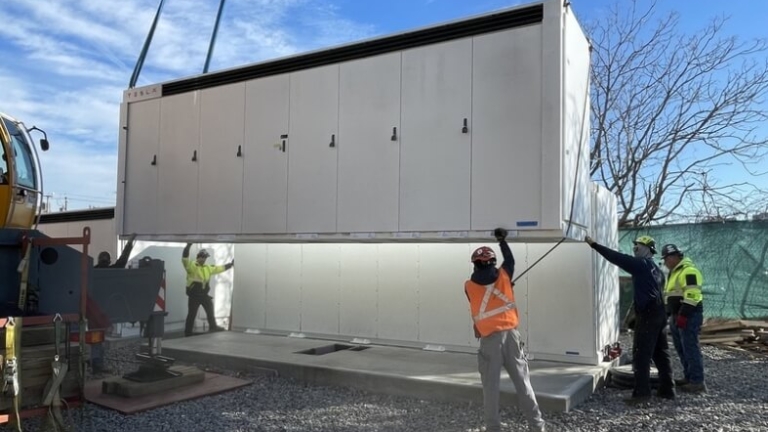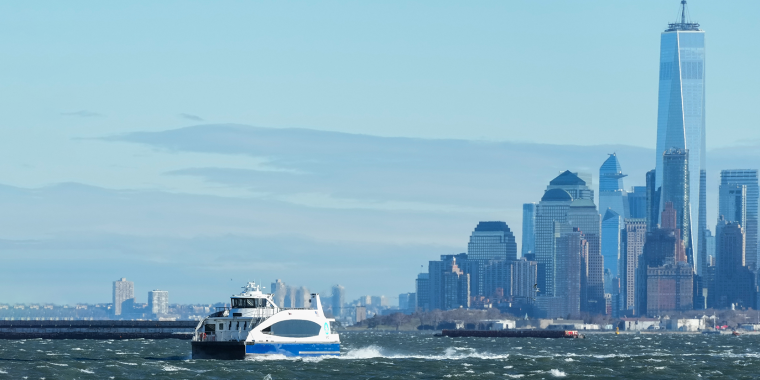NYCEDC Advances NYC’s Green Economy Action Plan with Next Round of Support for Battery Energy Storage Projects

NYCIDA Approves Four Battery Energy Storage Projects in Queens and Staten Island
Battery Storage Will Power New York’s Clean Energy Transition, Increasing Resilience and Efficiency of New York’s Grid
NEW YORK, NY—Today, the New York City Economic Development Corporation (NYCEDC) and the New York City Industrial Development Agency (NYCIDA) announced the advancement of a key commitment in New York City’s Green Economy Action Plan to develop a clean and renewable energy system. The NYCIDA approved four battery energy storage projects located in Queens and Staten Island. Battery energy storage is a critical piece of infrastructure that will strengthen the resilience and reliability of the New York City electricity grid as it transitions to a clean energy future.
In February, Mayor Adams unveiled New York City’s Green Economy Action Plan which lays out a series of commitments and strategies to grow the city’s green economy and train and position New Yorkers of all backgrounds to benefit from the nearly 400,000 projected green collar jobs in New York City by 2040. A key commitment in the Action Plan is to promote and deploy NYCIDA tax incentives to support battery storage capacity projects and support other green economy uses throughout the five boroughs.
“Congratulations to NYCEDC for the continued execution of the Green Economy Action Plan. The projects announced today will accelerate the creation of a reliable green grid and the transition away from polluting fossil fuels and to renewables like wind, solar and the battery storage systems,” said Deputy Mayor for Housing, Economic Development, and Workforce Maria Torres-Springer.
“A just transition to a clean energy future will require using battery energy storage systems – a solution that will balance supply and demand by creating a safe, more efficient, and resilient energy grid,” said NYCEDC President & CEO Andrew Kimball. “A key commitment in the first-of-its-kind Green Economy Action Plan, these projects will not only bolster our green economy but also follow some of the strictest safety standards in the nation.”
“Large-scale deployment of battery storage is crucial to New York City meeting its renewable energy goals and advancing a just transition,” said Mayor’s Office of Climate & Environmental Justice Director Elijah Hutchinson. “The board's decision to approve these four important energy storage projects will help reduce our reliance on polluting fossil fuels, with the Victory Boulevard project directly leading to the retirement of a fossil fuel power generator.”
The NYCIDA approved financial assistance to three companies for battery storage projects in Queens and Staten Island, for a total of four different sites. The sites include:
STATEN ISLAND
NineDot Energy - 4838 Arthur Kill Road Staten Island, New York 10309
The project will include two separate battery energy storage systems capable of charging from and discharging into the New York power grid and a solar canopy system connected to each battery system. Each of the battery systems will have an estimated storage capacity of 4.9 MW for a total estimated storage capacity of 9.8 MW/39.1 MW/hours across the battery systems,, which is estimated to be enough energy to power 9,800 New York City households for four hours on a peak summer day. This project is expected to be operational by winter 2025.
Elevate Renewables - 4401 Victory Boulevard, Staten Island, New York 10314
The project will include a battery energy storage system capable of charging from, and discharging into, the New York power grid. The battery system will have an estimated storage capacity of 15.1 MW/60.1 MW/hours s, which is estimated to be enough energy to power 15,100 New York City households for four hours on a peak summer day. As part of the Project, the Company will retire an existing 15.1 MW gas turbine at the Generating Station and reutilize certain electrical infrastructure. This project is expected to be operational by December 2025.
QUEENS
Soltage - 53-05 46th Street & 46-10 53rd Avenue Maspeth, Queens,11378
The projects will include two battery energy storage systems capable of charging from and discharging into the New York power grid. Each of the battery systems will have an estimated storage capacity of 5 MW/20 MW/hours for a total estimated storage capacity of 10 MW/40 MW/hours across both battery storage systems, enough energy to power 10,000 New York City households for four hours on a peak summer day. Each project’s battery storage system is capable of charging from and discharging into the New York power grid. These projects are expected to be operational by Summer 2025.
“Elevate is excited to partner with the NYC Industrial Development Agency and to demonstrate the transformative addition of a carbon-neutral battery storage systems. We are excited to advance the Arthur Kill project as a first-of-a-kind replacement of a thermal generating facility in NY,” said Eric Cherniss, Founder and Head of Development at Elevate Renewables.
“We are grateful to NYCEDC and the NYCIDA Board for their support as we advance New York City's clean energy transition - and the growth of Green Economy jobs - through our community-scale battery storage projects,” said David Arfin, CEO of NineDot Energy. “The project approved today by NYCIDA will be enough to power up to10,000 households for four hours on a peak summer day, significantly reducing our reliance on high-emissions 'peaker' plants and supporting advancement of renewables like wind on Staten Island.”
“Energy storage is critical to helping New York City and State meet their ambitious renewable energy and climate goals. These projects will improve the electric grid’s reliability, help store renewable energy and retire existing polluting power plants, and provide the grid capacity needed for electrification of vehicles and heating,” said SoltageSenior Vice President of Storage Development Dirk van Ouwerkerk “As a renewable energy company based in the New York City area, Soltage employs New York residents and partners with local contractors. Soltage is committed to making New York City a leader in the green economy and ensuring the benefits of the energy transition are accessible to all New Yorkers. Soltage thanks NYCIDA for its support of these projects and looks forward to working together to achieve the shared mission of New York City’s transition to a cleaner and more reliable energy system.”
The IDA helps to lower the cost of capital investment through discretionary tax benefits. The IDA has supported approximately 254MW of battery storage capacity in NYC, generating more than $400 million of private investment and supporting progress toward the City’s target for energy storage capacity (500MW installed by 2025). Unlocking additional storage capacity will ultimately underpin a stronger and more efficient renewable energy sector. IDA incentives may also be used to support EV freight charging, cold storage retrofits, and other green economy uses.
Battery energy storage systems in New York City are rigorously regulated, with oversight from the safety industry, state, and local authorities. All code, location, and other local requirements must be met. In addition to general code compliance, additional site-specific protections may be required to be addressed by operations and emergency procedures, and fire service coordination.
About NYCEDC
New York City Economic Development Corporation is a mission-driven, nonprofit organization that works for a vibrant, inclusive, and globally competitive economy for all New Yorkers. We take a comprehensive approach, through four main strategies: strengthen confidence in NYC as a great place to do business; grow innovative sectors with a focus on equity; build neighborhoods as places to live, learn, work, and play; and deliver sustainable infrastructure for communities and the city's future economy. To learn more about what we do, visit us on Facebook, Twitter, LinkedIn, and Instagram.


